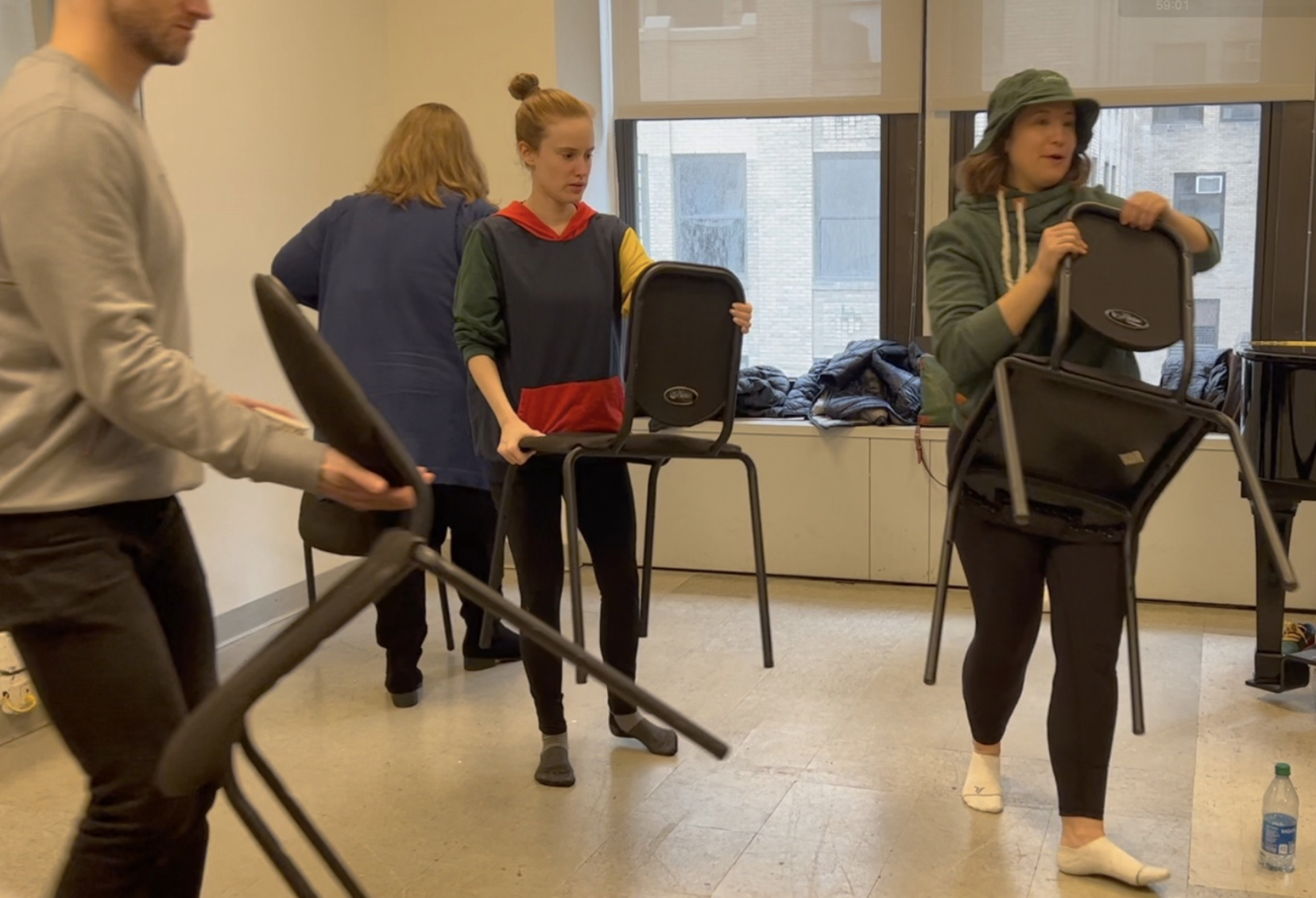New York
2022-2023
Joan Melton, PhD
When singers and dancers use voice in performance, they need the same physical/vocal skills as actors, who frequently need to sing. And performers in all three categories use voice-movement skills to teach, audition, present, and communicate with colleagues. Yet, curricula for singers rarely include other vocal tasks or a connection to movement, dance curricula lack voice, and actors lack singing. As a result, gifted performers in all three categories—theatre, music, and dance—may be highly skilled in some areas and justly apprehensive in others!
Integrative training brings it all together and fills in gaps, so that performers can meet a wide range of physical/vocal demands. Yoga and other movement modalities connect with voicing in any position moving or still, while language and an element of play are inherent in the mix.
2019 – 21
Voice-Movement Skills Onstage and Off, for Performers in Theatre, Music, and Dance
Speak Like You Sing: Integrating Classical Techniques from Theatre and Music in Spoken Dialogue for Opera
Joan Melton, PhD, Zachary Bradford, Jessica Lee
When opera singers speak onstage, they need the same physical/vocal skills as theatre actors, who regularly fill large spaces without shouting or doing vocal damage. Yet, nothing in the curricula of most vocal performance majors currently addresses this need. So singers are being asked to use microphones for spoken dialogue in some productions. Stage directors and conductors are quoted as saying opera singers “don’t know how to use their voices for dialogue,” (Cohn F) and “It’s a whole different kind of vocal production.” Actually, it’s the same basic production as singing, linked with the phrasing of speech appropriate to the material.
Cohn F. Talk therapy. Opera America Magazine. 2018, fall; 33.
ABSTRACT
Objective: In order to maintain characterization throughout a production, opera singers frequently need skills in more than one vocal task. This exploratory study investigated spoken dialogue before and after two hours of training (one-hour class, one-hour tutorial) in the use of language as an actor, with breath management, pitch range, and resonance strategies of a singer. Comparative recordings of sung and spoken material were analyzed for acoustic qualities.
Design: At the National Opera Center, New York, six professional singers from different voice categories recorded one minute of spoken dialogue before training. Approximately a week later, they recorded one minute of an aria, unaccompanied, followed by the spoken dialogue post-training, then improvised a one - two-minute performance moving between singing and speaking. Data were analyzed for fundamental frequency (F0), sound pressure level (SPL), and long-term average spectrum (LTAS).
Results: Comparing for all singers pre- to post-training, mean F0 of spoken dialogue increased and SPL mean and range increased. Comparing aria to spoken dialogue post-training, SPL range increased. F0 ranges were closer to each other in improvisation than in separate performances of aria and dialogue. Energy peaks between 2 and 4 kHz on LTAS appeared in more than one performing condition.
Conclusions: In spoken dialogue post-training, some F0 and SPL data gravitated toward those of the aria and away from the initial recording, suggesting that participants were beginning to transfer production skills from singing to speaking. A perceptual study is needed to assess characterization and the use of language pre- and post-training.
2019 - 20
Acoustic Characteristics of Vocal Sounds Used by Professional Actors Performing Classical Material without Microphones in Outdoor Theatre
Joan Melton, PhD, Zachary Bradford, Jessica Lee
Results suggest that, along with vocal loudness, fundamental frequency range, the Actor’s Formant, articulation, and movement contribute to the successful performance of classical material in outdoor theatre. Character, style, and timing are also essential, and in venues like Central Park, intelligibility is critical. Acoustic strategies for communicating across distance appear to be different for male and female actors, though additional investigation is needed in this regard. Specifics of voice function, for example, tend to be worked out in the environment, so feedback from the actors themselves could prove highly valuable. Although the current study used an actual theatre space for data collection, sounds experienced in a live performance are uniquely influenced by where audience members are positioned in relation to the performers. Therefore, a follow-up perceptual study from a range of distances may provide additional details regarding vocal sounds that carry well and communicate effectively with audiences in outdoor environments.
ABSTRACT
Objective: Theatre actors use voice in virtually any physical position, moving or still, and perform in a wide range of venues. The present study investigated acoustic qualities required to perform classical material without electronic amplification in outdoor spaces.
Design: Eight professional actors, four female, four male, from NY Classical Theatre performed one-minute monologues, first stationary, then moving, for audio recording in Central Park. Four subjects recorded two monologues each, from productions in which they played both male and female characters. Data were analyzed for fundamental frequency (F0), sound pressure level (SPL), and long-term average spectrum (LTAS).
Results: Overall, F0 ranged between 75.38 and 530.33 Hz. Average F0 was 326 Hz stationary and 335.78 Hz moving for females, 248.54 Hz stationary, 252.82 Hz moving for males. SPL ranged from 28.54 to 110.51 dB for females, and 56.69 to 124.44 dB for males. Average SPL was 82 dB for females, 96.98 dB for males. On LTAS, females had a peak between 3 to 4 kHz ranging from 1.5 to 4.5 dB and another between 4 to 5 kHz ranging from 1 to 4.5 dB, while males had a peak between 3 to 4 kHz ranging from 1 to 8.5 dB.
Conclusions: Actors appear to use a similar F0 range across gender and performing conditions. Average F0 increased from stationary to moving. Males had greater SPL values than females, and the amplitude of peaks in the region of the Actor’s Formant of LTAS curves was higher in male than female voices.

